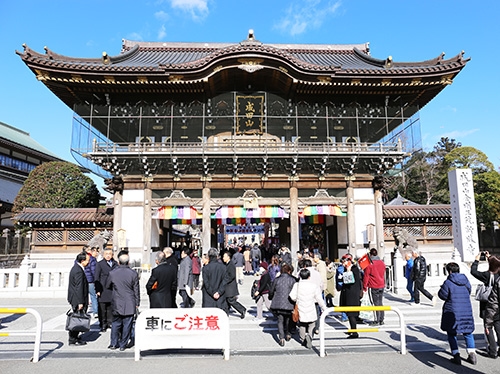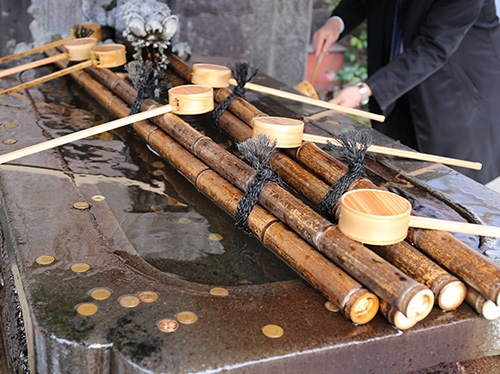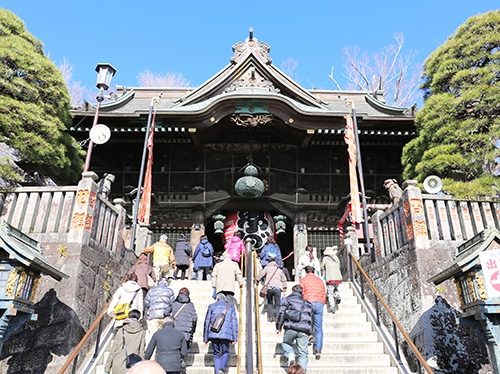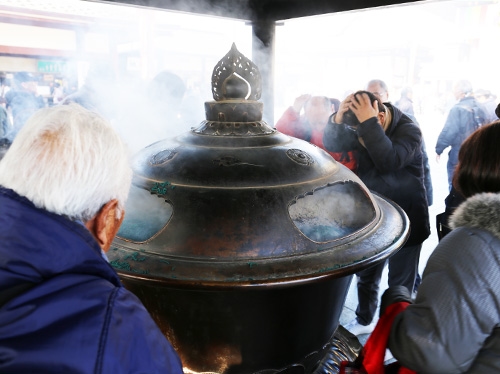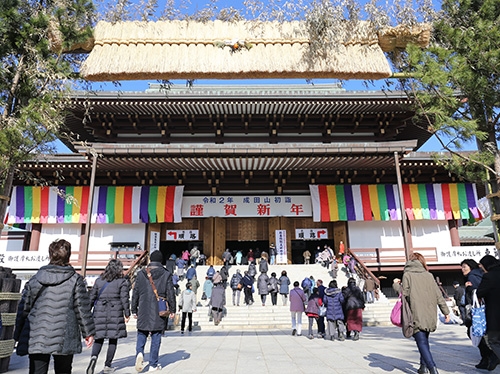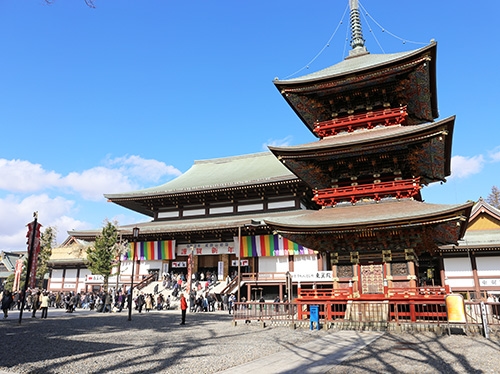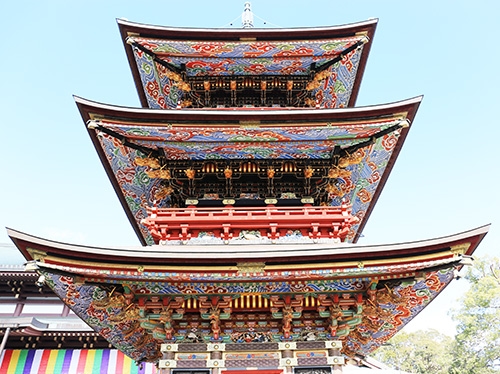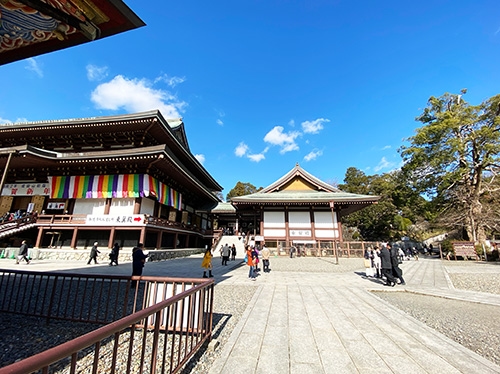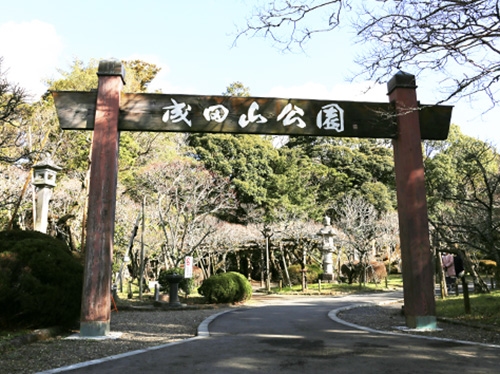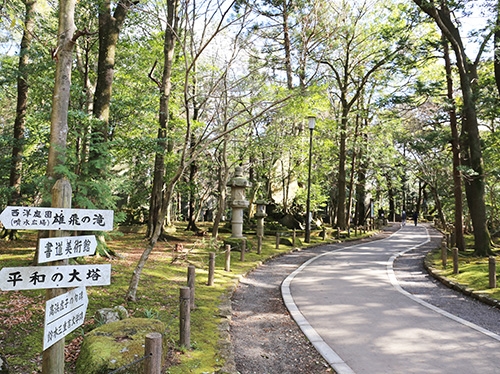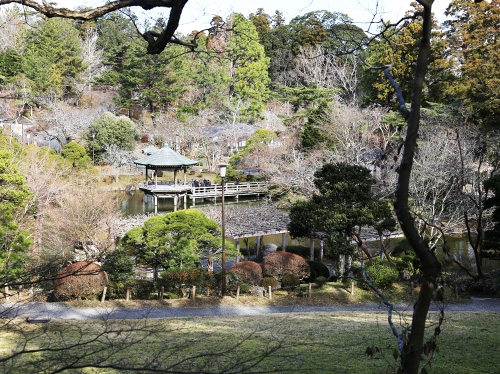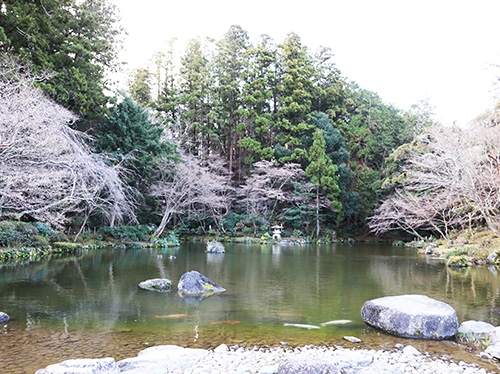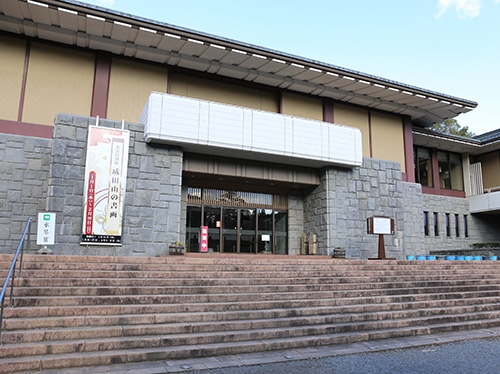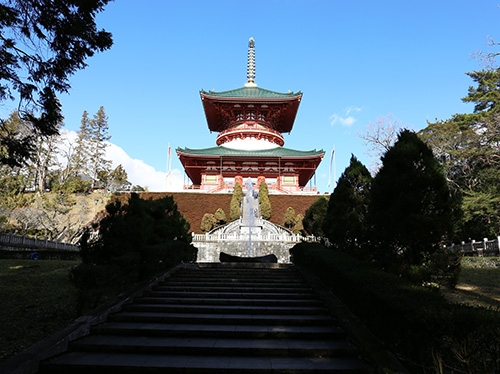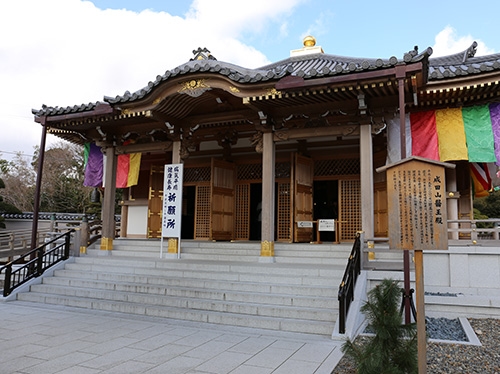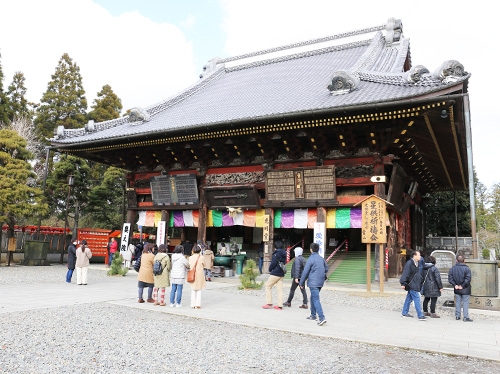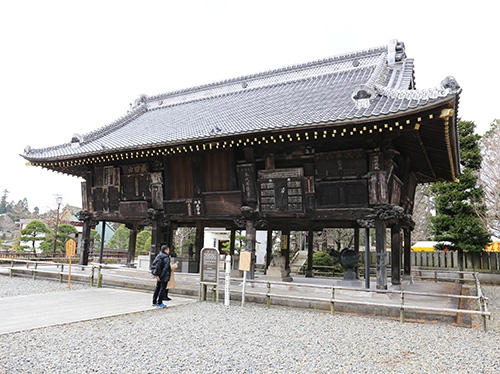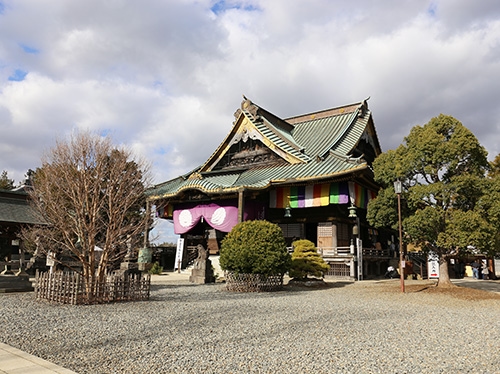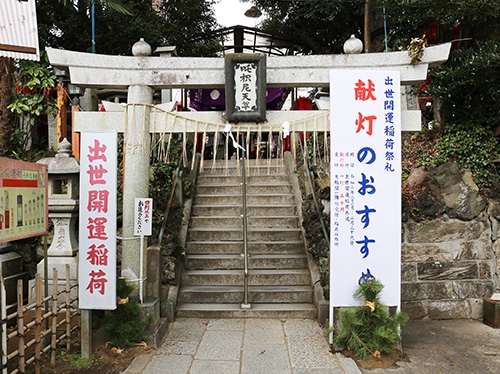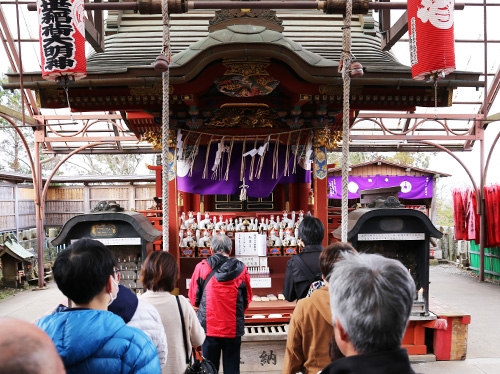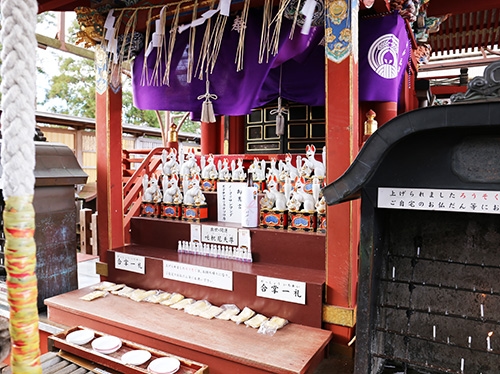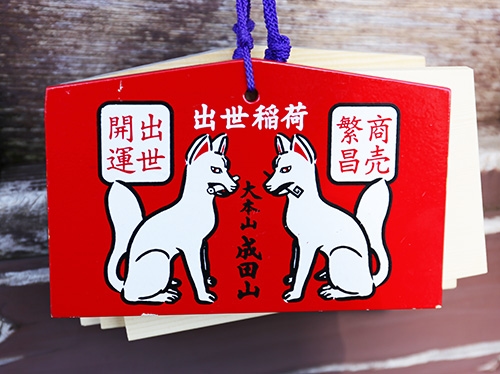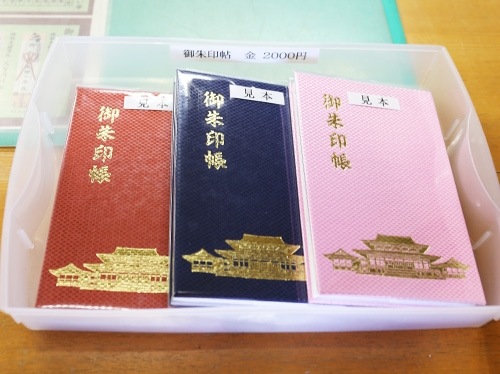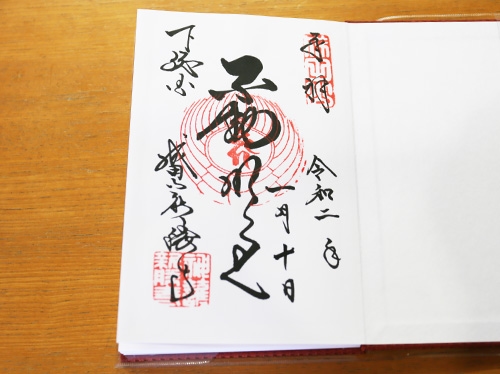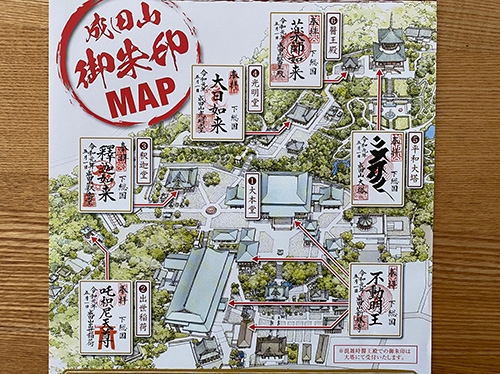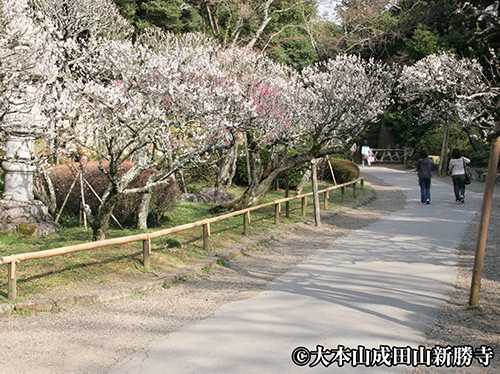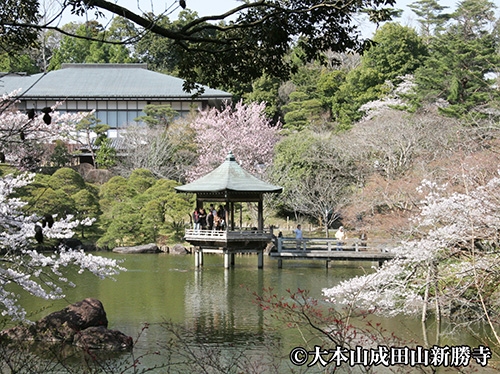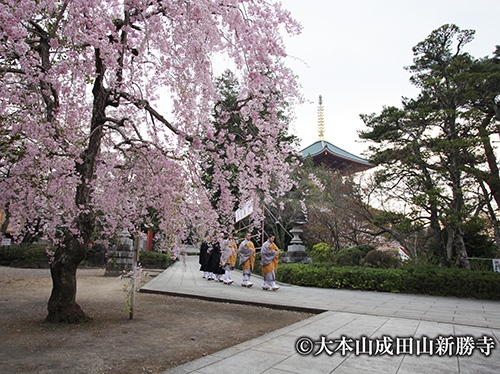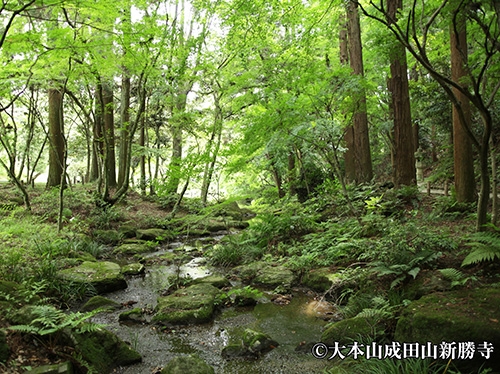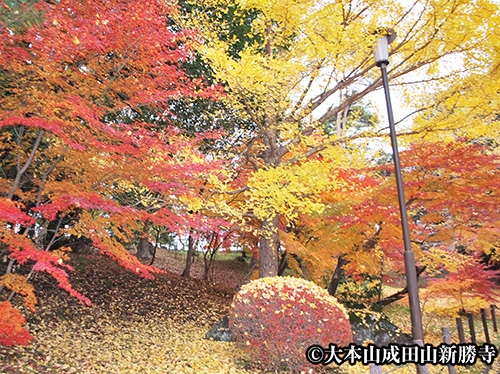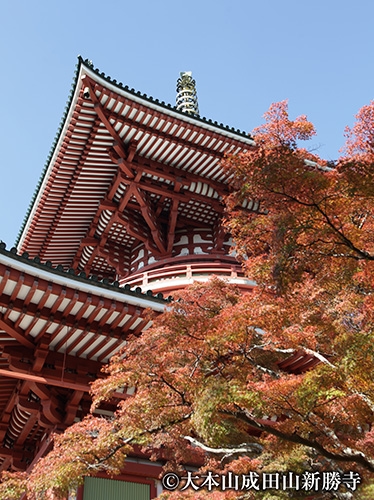Naritasan Shinshoji Temple has a long history dating back more than 1,000 years. The deity Fudomyoo is still worshipped by many people. Its location close to Narita Airport makes it a spot that tourists can easily visit.
There are five buildings within the grounds of Naritasan Shinshoji Temple that have been designated as Important Cultural Properties. The oldest of them, Komyodo Hall, was built in 1701 and is a valuable cultural property that evokes an atmosphere reminiscent of the Edo period.
In addition to the historical buildings, also recommended is the vast Naritasan Park. The gardens, with their beautiful scenery and colors that change with the seasons, can be enjoyed any time of year.
Please be sure to visit Naritasan Shinshoji Temple, as it will undoubtedly be a highlight of your trip.
What you need to know! How to visit Naritasan Shinshoji Temple
First of all, do you know the difference between a temple and a shrine? Japanese people are familiar with both temples and shrines, and they often go to both, but their roles are actually completely different.
At a temple, you will find Buddhist monks worshipping and Buddhist statues. There are many types of Buddha, such as Dainichi Nyorai, Yakushi Nyorai, Shaka Nyorai, and Sho Kannon.
There are also differences in how we pray at a temple, such as not clapping our hands after making an offering of money, but rather holding our hands together in front of our chest as the usual form of worship.
Shrines have their origins in places where nature was once worshipped or where sacred ceremonies were once held. Shinto deities are worshipped at the shrine, and the priest and shrine maidens carry out work such as preparation for ceremonies.
And in most cases, there is a Torii gate at the entrance of the shrine. This structure serves to distinguish the world of the deity from the world in which people live. The usual method of worship, after making an offering, is to bow twice, clap your hands twice, and lower your head once more.
This guide should be helpful when you visit Japan, so please be sure to take a look!
Okay, let's go and worship at Naritasan! We will show you how, together with explanatory photos!
Bow at the Somon, or Main Gate
First of all, we bow as a form of greeting. When you come down the approach from Narita Station, head to the Main Gate at Somon-mae. From here on, you will be in the world of the Buddha, so calm your mind and bow before you pass through the gate.
Cleanse your hands and mouth at the Chozuya
The Chozuya is a pavilion where worshippers wash and clean their hands and mouth. The meaning here is to wash your hands and rinse your mouth to purify your heart (soul). The usual procedure is as follows:
1. With a ladle in your right hand, use it to draw and pour water on your left hand to wash it.
2. Change the ladle to your left hand and use it to wash your right hand.
3. Now switch the ladle back to your right hand and pour some water into the palm of your left hand.
4. Put the water in your mouth and gently spit it out after rinsing.
5. Pour water on your left hand to wash it again.
6. Hold the ladle vertically and wash it by pouring the remaining water over the handle.
7. Return the ladle to its original position.
There are surprisingly many steps, but it's easy once you get used to it. Try to store it away in a corner of your mind!
Pass through the Niomon Gate toward the Great Main Hall
Niomon Gate, located in front of the Great Main Hall, was rebuilt in 1831 and has been designated as an Important Cultural Property. The big red paper lantern has letters that say "Uogashi", or fish market, and was a votive offering by the businessmen of the fish market in Tsukiji, Tokyo in 1968. This lantern weighs 800kg!
Purify your heart at the Kokaku
It is said that applying the smoke rising from the Kokaku incense burner to parts of the body can cure ailments.
Bow once and hold your hands together at the Great Main Hall
When you enter the Great Main Hall, bow once in front of the offering box before making your offering, then pray with your hands held together. Then give a slight bow.
Pray to the Fudomyoo in the hall
Again bow, hold your hands together and pray to the statue of Fudomyoo in front of you. Then bow again lightly.
This is the usual way to worship.
However, there is no strict method of worship that says "you must do it this way." So please think of this as a guide.
Naritasan Walking Routes
After you have finished worshipping, one thing you must do is take a stroll around the grounds. We will introduce you to the various spots in order!
The first is the Three-story Pagoda in front of the Great Main Hall. Built in 1712, this is an Important Cultural Property. The 16 most distinguished disciples of Buddha are called Juroku Rakanzu or 16 Arhats, and beautiful reliefs of these saints are on display here.
After enjoying the 25m-tall Three-story Pagoda, we head to Naritasan Park.
The entrance to Naritasan Park is on the right hand side as you face the Great Main Hall.
The large garden changes subtly in accordance with the four seasons.
Here you can enjoy plum blossoms, cherry blossoms, azaleas, the fresh greenery of spring, and colorful autumn foliage.
Carp and waterfowl can be seen in Monju Pond.
The Naritasan Calligraphy Museum opened in 1992.
An art museum with some of Japan's rarest books. The collection includes ancient and modern Japanese and Chinese documents and modern Japanese calligraphy works and materials.
Built in 1984, the Great Peace Pagoda symbolizes the teachings of the Shingon school of esoteric Buddhism. The bright colors are particularly eye-catching. Inside, there is an exhibition of the history of Naritasan and a hall where sutras are transcribed, which you can also experience.
This is Iouden, the newest temple in Naritasan Shinshoji Temple.
It is a place to pray for healthy long life and recovery from illness.
Built in 1701, Komyodo Hall is an Important Cultural Property.
It served as the main hall before Shakado Hall, and it is an important building of the mid-Edo period. It is a place to pray for marriage.
Gakudo Hall is an Important Cultural Property erected in 1861. The building is adorned with plaques and Ema, or votive picture tablets dedicated by worshippers, and the precious picture tablets and various sculptures offered up during the Edo period are worth a look.
Go down the stairs on the side of Gakudo Hall and you can exit on the left side facing the Great Main Hall.
Constructed in 1858, Shakado Hall is another Important Cultural Property and was formerly the main hall. It was moved to its current location in 1964 when the current Great Main Hall was built. The surrounding sculptures are also impressive, so the temple is one of the places you have to see when you visit. By the way, this is a place to pray for exorcism!
If you have the time, another place you should visit is Shusse Inari.
It has been popular since ancient times as a place that brings good luck in your career.
This is an Ema.
An Ema has a picture of foxes on the front, and on the reverse worshippers write a wish and their name. The origin of Ema is said to lie in the ancient custom of making an offering to the gods of a horse that had lived as a Shinme, or sacred horse. Foreign visitors to Narita are also invited make a wish with an Ema!
Collecting Goshuin
Collecting Goshuin
Goshuin, seal stamps given as proof of a worshipper's visit to a shrine or temple, have become increasingly popular in Japan in recent years. Goshuin designs are very unique, ranging from traditional and simple hand-written in black ink to colorful ones with pictures and stamps. Every Goshuin is full of charm, and for foreign tourists they can be considered a piece of art, making them an ideal souvenir of Japan.
Now, the Goshuincho, or stamp collection books at Naritasan come in three colors. You can purchase an original Goshuincho with a design of the Great Main Hall for 2,000 yen.
You can collect Goshuin in six places: the Great Main Hall, Komyodo Hall, Shakado Hall, Shusse Inari, Iouden, and the Great Peace Pagoda. (The Goshuin are 300 yen each.)
What could be more enjoyable than taking a stroll while collecting the various Goshuin? You will find maps of the Goshuin locations in the grounds of Naritasan, so be sure to refer to them as you go!
The four seasons at Naritasan
Naritasan Shinshoji Temple is also an ideal place for walking.
On a sunny day, be sure to take in a visit to Naritasan Park.
In spring, you can enjoy the blossoms of about 460 red and white plum trees in Naritasan Park.
A particularly pleasant time for a walk is from March to early April when the cherry blossoms are at their best.
In summer, the park is cooled by the spread of fresh green leaves.
From autumn to winter, the trees show various faces as they change color.
What did you think?
Naritasan is a temple with a multitude of attractions.
Come and enjoy Naritasan for as long as your schedule allows.



